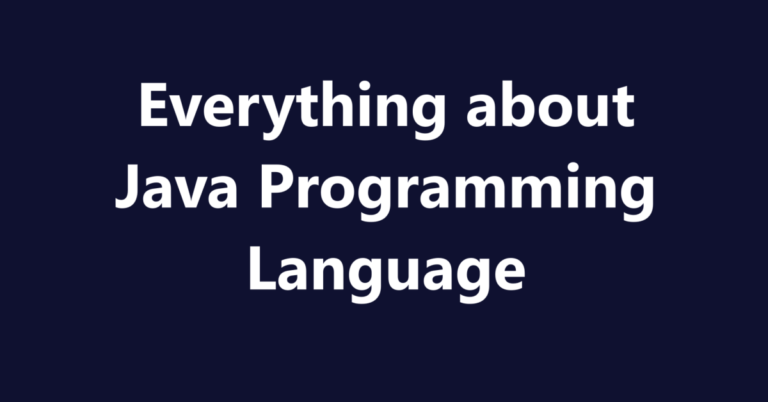Linux-Based Mobile Apps. The world of mobile applications is dominated by Android and iOS, but a growing community is exploring alternative operating systems and development approaches. Among these, Linux-based mobile operating systems present a fascinating and increasingly viable option, offering potential advantages in customization, security, and open-source flexibility. This post aims to provide a comprehensive guide on how to create Linux-based mobile applications, covering various platforms, development tools, and considerations.
Linux-Based Mobile Apps

Why Consider Linux-Based Mobile Apps?
Before diving into the “how-to,” it’s crucial to understand why developers might opt for a Linux-based approach. Here are some key motivations:
- Open Source & Customization: Linux, at its core, is open source. This provides unparalleled access to the underlying system, enabling developers to deeply customize the OS and tailor applications to specific hardware or niche requirements.
- Security & Privacy: The transparent nature of open-source allows for community auditing and potentially quicker identification and patching of security vulnerabilities. This can lead to more secure applications, especially when dealing with sensitive data. Furthermore, many Linux-based distributions prioritize user privacy and control over data.
- Hardware Control: Direct access to hardware is often easier in a Linux environment, allowing developers to create applications that leverage specific device capabilities, such as custom sensors or specialized peripherals.
- Avoidance of Platform Lock-in: Relying solely on Android or iOS can limit developers’ freedom. Linux-based platforms offer an alternative ecosystem, potentially reducing dependency on dominant players and fostering innovation.
- Embedded Systems Integration: Linux is widely used in embedded systems. Creating a mobile application on a Linux-based platform can facilitate seamless integration with existing embedded infrastructure.
Choosing Your Linux-Based Mobile Platform:
The foundation of your application development lies in selecting the right Linux-based mobile operating system. Here are some of the most prominent options:
- Ubuntu Touch (UBports): Ubuntu Touch is a community-driven project that aims to bring a pure Ubuntu experience to mobile devices. It boasts a declarative UI framework called Qt/QML, offering a visually appealing and responsive user experience. It’s supported on a limited range of devices but offers a streamlined and actively maintained environment.
- Plasma Mobile (KDE): Plasma Mobile is another compelling option, based on the KDE Plasma desktop environment. It leverages Qt/QML for its UI and offers a highly customizable and visually rich experience. Plasma Mobile emphasizes integration with the broader KDE ecosystem and provides a familiar environment for KDE users.
- Sailfish OS (Jolla): Sailfish OS is developed by Jolla, a company founded by former Nokia employees. It features a unique gesture-based UI and is known for its flexibility and compatibility with Android applications (through a compatibility layer). Sailfish OS caters to users who value privacy and an alternative mobile experience.
- PostmarketOS: PostmarketOS is not a fully-fledged mobile OS, but rather a distribution designed to extend the lifespan of existing Android devices by running a standard Linux kernel. It aims to provide long-term support and updates for older devices, effectively transforming them into Linux-powered mobile platforms. It supports a wide range of UIs, including GNOME, KDE Plasma Mobile, and more.
- PureOS (Purism): PureOS is a privacy-focused distribution developed by Purism. It’s the default operating system on their Librem 5 smartphone, designed with security and user control as top priorities. PureOS emphasizes free and open-source software and provides a robust platform for privacy-conscious developers.
Development Tools and Technologies:
Once you’ve chosen your platform, you’ll need to select the appropriate development tools and technologies. Here’s an overview of common options:
- Qt/QML: This is a widely used framework for creating cross-platform applications, particularly favored by Ubuntu Touch and Plasma Mobile. Qt/QML allows you to design UIs declaratively using QML, a markup language, and implement application logic using C++. Qt provides a rich set of libraries for handling everything from UI elements to networking and multimedia.
- GTK: GTK is another popular cross-platform toolkit often used for creating desktop applications. While less common for mobile UI directly, it can be used in conjunction with frameworks like Libadwaita to create responsive and adaptive interfaces suitable for mobile devices. This might be relevant for distributions like PureOS aiming for convergence between desktop and mobile.
- C++: A powerful and versatile language, C++ is often used for implementing the core logic of Linux-based mobile applications. Its performance and control over system resources make it ideal for tasks such as data processing, networking, and hardware interaction.
- Python: Python is a high-level, interpreted language that is increasingly used for rapid prototyping and development of mobile applications. Frameworks like Kivy and PyQt (Qt bindings for Python) allow you to create cross-platform UIs with Python.
- Rust: Rust is a modern systems programming language that emphasizes safety, performance, and concurrency. It’s gaining popularity for its ability to create reliable and efficient applications, particularly for system-level components.
- Web Technologies (HTML, CSS, JavaScript): Utilizing web technologies with frameworks like Apache Cordova or Electron (though typically used for desktop) might be an option for creating hybrid applications, but performance and native integration could be limitations. While not ideal for all use cases, this approach offers a relatively quick path to deployment if you’re already proficient in web development.
- SDKs and APIs: Each platform provides specific SDKs and APIs for accessing system functionalities. Familiarize yourself with the platform’s documentation to understand how to interact with hardware, access location data, manage notifications, and perform other tasks.
- Build Systems (CMake, Make): Efficiently managing your project’s build process is crucial. CMake is a popular cross-platform build system generator that can simplify the process of compiling and linking your code. Make is another commonly used build automation tool.
The Development Workflow:
The development workflow for Linux-based mobile apps shares similarities with traditional mobile development but also presents unique aspects:
- Setting up the Development Environment: Install the necessary SDKs, development tools, and build systems for your chosen platform. This often involves installing a Linux distribution (preferably the same as the target platform) on your development machine.
- Designing the User Interface: Use UI design tools like Qt Designer (for Qt/QML) or graphical design software to create the visual layout of your application. Consider the screen size and resolution of mobile devices and ensure a responsive and user-friendly experience.
- Implementing Application Logic: Write the code that handles user interactions, data processing, and communication with external services. Use C++, Python, or Rust to implement the core functionalities of your application.
- Building and Packaging the Application: Use the build system (CMake, Make) to compile your code and package it into an installable file format specific to your chosen platform (e.g., .click for Ubuntu Touch, .rpm for Sailfish OS).
- Testing and Debugging: Thoroughly test your application on emulators or physical devices. Use debugging tools like GDB to identify and fix errors.
- Deployment: Publish your application to the platform’s app store (if available) or distribute it directly to users.
Key Considerations and Challenges:
Developing for Linux-based mobile platforms presents some unique considerations and challenges:
- Fragmentation: The diversity of Linux distributions can lead to fragmentation and compatibility issues. Ensure your application is tested on multiple platforms and hardware configurations.
- Limited Device Support: Compared to Android and iOS, the range of devices supported by Linux-based mobile platforms is relatively limited. Consider the target audience and the available hardware options.
- Smaller User Base: The user base for these platforms is significantly smaller than Android or iOS. This may impact the potential reach and profitability of your application.
- Documentation and Community Support: Documentation and community support may be less extensive than for mainstream platforms. Be prepared to delve into the platform’s source code and engage with the community to find solutions.
- Hardware Abstraction: Direct hardware access can be both an advantage and a challenge. Implementing hardware abstraction layers can improve portability, but it adds complexity to the development process.
Tips for Success:
- Focus on a Specific Niche: Targeting a specific niche or user group can help you gain traction in the smaller ecosystem.
- Embrace Open Source Principles: Contribute to the community, share your code, and participate in discussions.
- Prioritize User Experience: Despite the focus on technology, user experience remains crucial. Design an intuitive and responsive interface that meets user needs.
- Leverage Existing Libraries and Frameworks: Utilize existing libraries and frameworks to accelerate development and reduce the risk of reinventing the wheel.
- Thoroughly Test and Debug: Rigorous testing is essential to ensure the stability and reliability of your application.
Conclusion:

Developing Linux-based mobile applications is a challenging but rewarding endeavor. It offers developers the opportunity to create unique and customizable experiences, contribute to the open-source community, and explore alternative mobile platforms. While the ecosystem is still evolving, the growing interest in Linux-based mobile devices and the increasing maturity of development tools make this a promising area for innovation and exploration. By understanding the platforms, tools, and challenges involved, developers can pave the way for a more diverse and open mobile landscape.



